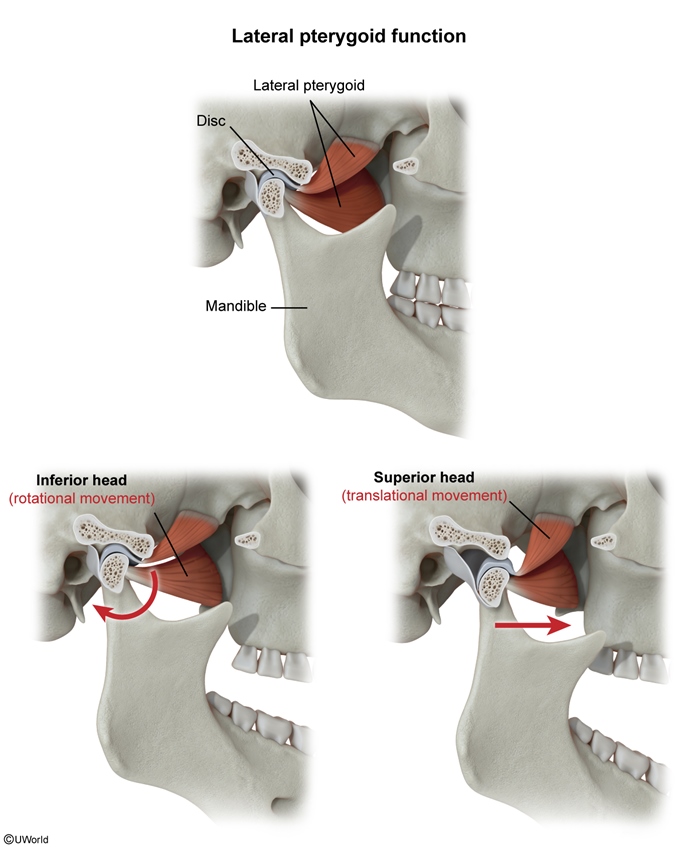Temporomandibular Disorders
Article Sections
Introduction
Temporomandibular disorder (TMD) is associated with dysfunction of the temporomandibular joint (TMJ) and hypersensitivity of the mandibular nerve (CN V3). It can result in significant discomfort due to facial pain (eg, at the TMJ), headache, and ear pain.
Anatomy
The TMJ is a synovial articulation of the mandibular condyle with the temporal bone. An articular disc separates the joint into 2 separate synovial compartments.
TMJ opening involves a complex movement that has both hinge and sliding components:
- The initial movement is rotational (hinge) and driven by the lateral pterygoid muscles (Figure 1), which are the only muscles of mastication that aid in depressing the mandible (opening the jaw).
- As the jaw opens, the ligaments become taut, stopping further rotation.
- Further action by the lateral pterygoids results in translational movement (condyle slides anteriorly) that opens the jaw fully.
Continue Learning with UWorld
Get the full Temporomandibular Disorders article plus rich visuals, real-world cases, and in-depth insights from medical experts, all available through the UWorld Medical Library.
Figures

Figure 1